Resources
About Us
Satellite Imaging Market Size, Share, Forecast, & Trends Analysis by Offering, Application (Surveillance & Reconnaissance, Navigation, Environmental Conservation, Disaster Response), Sector (Government, Energy & Mining, Environment & Climate, Insurance), & Geography - Global Forecast to 2031
Report ID: MRICT - 1041058 Pages: 177 Aug-2024 Formats*: PDF Category: Information and Communications Technology Delivery: 2 to 4 Hours Download Free Sample ReportThe growth of this market is driven by the rising demand for geospatial information, the expanding use of satellite data for defense and security, the increased application of satellite imaging in agriculture and forestry, the growing adoption of satellite imaging in urban planning, and the increased utilization of satellite imaging in airport mapping. However, stringent regulatory frameworks are expected to restrain the growth of this market.
The growing use of satellite imaging for environmental monitoring and the increasing adoption of satellite imagery in wildlife conservation and ecology applications are anticipated to create significant market growth opportunities. However, data security concerns and atmospheric interference are significant challenges for players operating in this market.
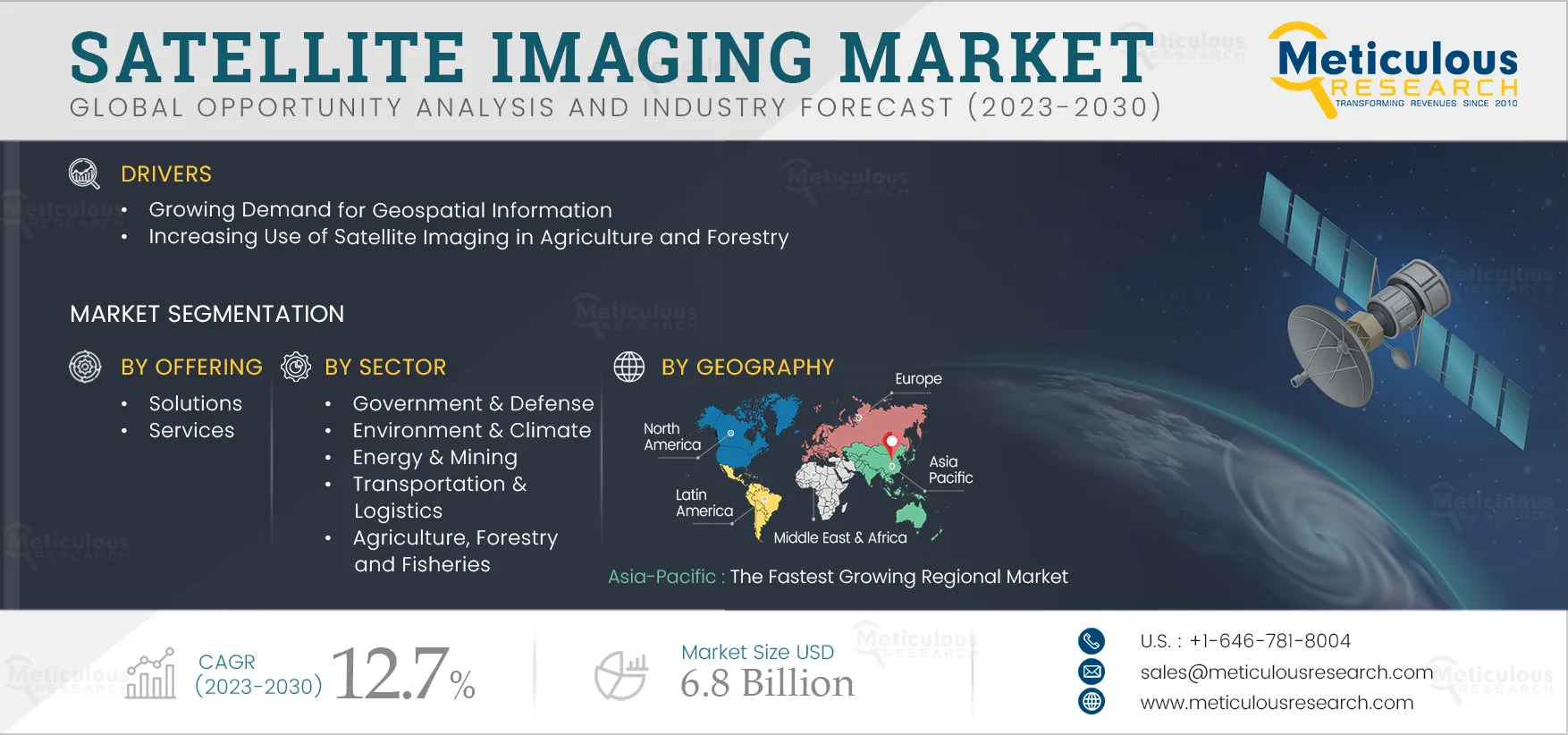 Click here to: Get Free Sample Pages of this Report
Click here to: Get Free Sample Pages of this Report
Satellite photography, leveraging advanced Geographic Information System (GIS) technologies, plays a critical role in military and defense applications by enabling precise geospatial analysis through high-resolution images. These capabilities enhance mission planning, target identification, and strategic location monitoring. GIS tools facilitate the integration of multiple data layers, allowing defense personnel to gain a comprehensive understanding of their operational environment. Additionally, geospatial intelligence derived from satellites aids in risk assessments, tracking troop movements, and evaluating terrain characteristics in dynamic security contexts. The synergy between GIS and satellite imagery provides military decision-makers with essential insights that ensure a strategic advantage and effective response capabilities.
Several players in the market offer satellite imaging services specifically for the defense and security sector, which is anticipated to drive market growth. For example, Satellite Imaging Corporation (SIC) (U.S.) provides geospatial products and services to government agencies and defense contractors for a range of applications in defense and security mapping.
Rapid urban development is placing increased pressure on the environment, including green spaces and urban parks. Satellite imaging has become an essential tool for urban planning, enabling the mapping and monitoring of changes in land use, infrastructure development, and urban growth. GIS specialists utilize high-resolution imagery to assess the environmental impacts of urban expansion, identify high-density areas, and analyze spatial trends. Satellite imagery facilitates the creation of accurate and up-to-date maps, significantly contributing to disaster risk assessment by identifying vulnerable regions and improving emergency response preparedness. This information empowers city planners to make informed decisions regarding zoning, transit networks, and infrastructure development.
Governments in various countries are partnering with satellite image providers to enhance urban management. For example, in August 2024, Bahrain’s Survey and Land Registration Bureau (SLRB) collaborated with Aetosky (Singapore) and Planet (U.S.) to transform urban planning in the country. By utilizing SkySat's 50 cm high-resolution satellite imagery, this partnership has introduced an advanced urban planning system covering 850 square kilometers, which improves municipal operations and environmental monitoring. As a result, the use of satellite imagery in sustainable urban planning and development is increasing, driving growth in this market.
Satellite technology is essential for identifying and monitoring natural hazards, providing valuable real-time data for effective disaster management. High-resolution images from satellites facilitate hazard identification by enabling the monitoring of climate change, severe weather events, and environmental conditions. Advanced sensors on satellites allow for the timely detection of changes in temperature, moisture levels, and other environmental parameters, enhancing the efficiency of early warning systems for severe weather events such as hurricanes, wildfires, and floods.
Several environmental organizations are increasingly leveraging satellite imagery for environmental monitoring. For instance, in February 2023, Maxar Technologies (U.S.), a provider of comprehensive space solutions and secure, precise geospatial intelligence, announced a three-year contractual agreement with Guyana’s Ministry of Natural Resources (MNR) to deliver environmental monitoring services for both offshore and terrestrial applications. Guyana’s Environmental Protection Agency (EPA) utilizes the Crow’s Nest Maritime Tipping and Cueing Service, which employs Maxar’s Very High Resolution (VHR) optical satellites, to monitor drilling vessels for regulatory compliance and safety. Additionally, the EPA uses the Crow’s Nest Multi-Sensor Oil Detection Service to identify potential spills. As a result, the growing application of satellite imaging technology for environmental monitoring is creating significant growth opportunities for market stakeholders.
The introduction of new and advanced technologies in the market, along with their integration into satellite imaging, is expected to enhance satellite imagery capabilities and generate opportunities for market growth. Notable advancements include electric propulsion, high-resolution cameras, advanced remote sensing techniques, next-generation GPS satellites, Light Detection and Ranging (LIDAR), and hyperspectral and multispectral sensors.
In addition to these advancements, recently developed technologies such as aerospace digital signal processors and large-scale anti-radiation field programmable gate arrays are expected to facilitate real-time image processing, addressing limitations in satellite imaging. As a result, satellite imagery is projected to become the preferred choice for nearly all commercial applications, presenting substantial growth opportunities for market stakeholders.
Based on offering, the global satellite imaging market is segmented into solutions and services. In 2024, the solutions segment is expected to account for a larger share of 60.8% of the global satellite imaging market. The large market share of this segment is attributed to the increasing use of satellite data to enhance agricultural productivity, the growing adoption of satellite imaging solutions across various industries, and the rising integration of AI technologies to improve data analysis and insights. Satellite imaging solutions provide significant advantages across multiple sectors, including government and defense, environmental and climate monitoring, energy and mining, marine applications, and agriculture, facilitating informed decision-making. These sectors increasingly depend on satellite imaging for effective environmental monitoring and management. For example, in September 2022, the U.S. National Geospatial-Intelligence Agency (NGA) awarded Maxar Technologies Holdings Inc. a contract renewal for Option Year 3 of the Global Enhanced GEOINT Delivery (G-EGD) program.
However, the services segment is projected to register a higher CAGR during the forecast period. This growth is attributed to the rising utilization of satellite imagery for various monitoring applications and the increasing collaborations among market stakeholders to enhance service capabilities. Key providers offer customized services tailored to specific customer needs, including vegetation monitoring, environmental assessments, flood risk evaluations, and infrastructure oversight. These services empower organizations to make informed decisions by providing detailed insights into monitored sites. For example, in February 2023, the Guyana Ministry of Natural Resources (MNR) signed a three-year contract with Maxar Technologies Holdings Inc. (U.S.) for environmental monitoring services encompassing both offshore and terrestrial areas.
Based on application, the global satellite imaging market is segmented into agricultural planning, infrastructure planning & monitoring, surveillance & reconnaissance, weather forecasting, navigation, environmental conservation & research, disaster response & aid planning, forestry monitoring & management, and other applications. In 2024, the surveillance & reconnaissance segment is expected to account for the largest share of 30.0% of the global satellite imaging market. The large market share of this segment is attributed to the growing development of satellites for military applications and the increasing use of satellite imagery for surveillance and reconnaissance purposes. Various key market players are actively focusing on developing satellites for diverse military applications. For instance, in November 2023, Tata Advanced Systems Limited (India) established a facility in collaboration with Satellogic Inc. (U.S.), an earth observation satellite specialist, to manufacture high-resolution imaging satellites. These satellites will be used for military purposes, including surveillance, reconnaissance, and target identification, thereby enhancing India's capacity to monitor its borders and deter potential threats.
However, the disaster response & aid planning segment is projected to register a higher CAGR during the forecast period. This growth is driven by the rising adoption of satellite imaging solutions for analyzing and monitoring natural disasters such as hurricanes, tornadoes, volcanoes, and earthquakes, as well as the increasing utilization of satellite imagery by governments to deploy disaster management teams and provide targeted assistance in affected areas. Several stakeholders have provided satellite imagery data to support disaster management efforts. For example, in May 2024, NASA assisted the U.S. Space Force and Air Force during a flood disaster in Brazil by supplying data and imagery that helped on-the-ground responders assess the impact of the disaster and coordinate aid deployment.
Based on sector, the global satellite imaging market is segmented into government & defense, environment & climate, energy & mining, transportation & logistics, agriculture, forestry and fisheries, finance & insurance, and other sectors. In 2024, the government & defense segment is expected to account for the largest share of 41.2% of the global satellite imaging market. The large market share of this segment is attributed to the increasing adoption of satellite imaging by government agencies to monitor environmental changes such as deforestation, natural disasters, and climate change. Additionally, there is rising use of maps and imagery for land use, infrastructure development, and population growth in urban planning, as well as an increasing reliance on satellite imaging by defense agencies to track military activities, troop movements, and potential threats. Several companies are partnering with governments worldwide to enhance their satellite imaging data offerings. For instance, in August 2024, Planet Labs PBC (U.S.) signed an agreement with NATO’s Communications and Information Agency (NCIA) to provide access to satellite images. The tasking capabilities of Planet Labs will empower NCIA decision-makers by offering images for detailed tracking and analysis of foreign military capabilities and activities, monitoring military infrastructure, and detecting movements.
However, the environment & climate segment is expected to register the highest CAGR during the forecast period. This growth is driven by the increasing adoption of satellite imaging to monitor sea surface temperature, atmospheric temperature, and weather patterns and the rising use of satellite imagery by government agencies to analyze the effects of urbanization on local climates and ecosystems. Several market players are forming partnerships with government agencies to provide precise, high-resolution imaging aimed at reducing the loss of life and infrastructure. For example, in May 2024, the African Union Commission (AUC) (East Africa) signed an agreement with the European Organisation for the Exploitation of Meteorological Satellites (Germany), Europe’s meteorological satellite agency, to enhance their collaboration on Earth observation. This agreement will facilitate access to accurate, high-resolution data for users in Africa to develop space, meteorological, and climate strategies.
Based on geography, the global satellite imaging market is segmented into North America, Europe, Asia-Pacific, Latin America, and the Middle East & Africa. In 2024, North America is expected to account for the largest share of 42.6% of the global satellite imaging market, followed by Asia-Pacific, Europe, Latin America, and the Middle East & Africa. The growth of the satellite imaging market in North America is driven by the high adoption of data-driven methods in business operations, an increasing demand for high-resolution imagery services, and the rapid integration of advanced analytics, AI, and machine learning. Additionally, rising government initiatives, the presence of prominent players in the region, and the growing demand for geospatial information further support this growth. North American businesses are increasingly advocating for the incorporation of satellite imaging solutions and services. For example, in May 2022, Maxar Technologies Holdings Inc. (U.S.) announced that the National Oceanic and Atmospheric Administration (NOAA) had modified its remote sensing license to enable non-Earth imaging (NEI) capabilities for both its existing satellite constellation and the next-generation WorldView Legion satellites.
However, the Asia-Pacific region is projected to record the highest CAGR of 15.0% during the forecast period. The growth of this market is primarily driven by rapid advancements in satellite technology, an increasing demand for satellite imaging across various applications, including urban planning and infrastructure development, and a rising need for satellite services in smart agriculture.
The report offers a competitive analysis based on an extensive assessment of the leading players’ product portfolios, geographic presence, and key growth strategies adopted in the last three to four years. Some of the key players operating in the satellite imaging market are Maxar Technologies Holdings Inc. (U.S.), Airbus SE (Netherlands), Lockheed Martin Corporation (U.S.), L3Harris Technologies, Inc. (U.S.), BlackSky Technology Inc. (U.S.), SpaceKnow, Inc. (U.S.), Satellite Imaging Corporation (U.S.), Capella Space Corp. (U.S.), EOS Data Analytics, Inc. (U.S.), Telespazio UK Ltd (U.K.), Arlula Pty Ltd (Australia), ICEYE (Finland), Remote Sensing Technology Center of Japan (RESTEC) (Japan), Shoghi Communications Ltd. (India), Planet Labs PBC (U.S.), European Space Imaging GmbH (Germany), EarthDaily Analytics Corp. (Canada), SatSure Analytics India Pvt Ltd (India), RMSI Pvt. Ltd. (India), Trimble Inc. (U.S.), Satellogic Inc. (U.S.), and Spire Global, Inc. (U.S.).
|
Particulars |
Details |
|
Number of Pages |
177 |
|
Format |
|
|
Forecast Period |
2024–2031 |
|
Base Year |
2023 |
|
CAGR (Value) |
13.8% |
|
Market Size (Value) |
USD 8.6 Billion by 2031 |
|
Segments Covered |
By Offering
By Application
By Sector
|
|
Countries Covered |
North America (U.S., Canada), Europe (Germany, U.K., Italy, Spain, Rest of Europe), Asia-Pacific (China, Japan, India, South Korea, Rest of Asia-Pacific), Latin America Middle East & Africa |
|
Key Companies |
Maxar Technologies Holdings Inc. (U.S.), Airbus SE (Netherlands), Lockheed Martin Corporation (U.S.), L3Harris Technologies, Inc. (U.S.), BlackSky Technology Inc. (U.S.), SpaceKnow, Inc. (U.S.), Satellite Imaging Corporation (U.S.), Capella Space Corp. (U.S.), EOS Data Analytics, Inc. (U.S.), Telespazio UK Ltd (U.K.), Arlula Pty Ltd (Australia), ICEYE (Finland), Remote Sensing Technology Center of Japan (RESTEC) (Japan), Shoghi Communications Ltd. (India), Planet Labs PBC (U.S.), European Space Imaging GmbH (Germany), EarthDaily Analytics Corp. (Canada), SatSure Analytics India Pvt Ltd (India), RMSI Pvt. Ltd. (India), Trimble Inc. (U.S.), Satellogic Inc. (U.S.), and Spire Global, Inc. (U.S.). |
This study focuses on market assessment and opportunity analysis by analyzing the sales of satellite imaging solutions & services across various regions and countries. This study also offers a competitive analysis of the satellite imaging market based on an extensive assessment of the leading players' product portfolios, geographic presence, and key growth strategies.
The satellite imaging market is expected to reach $8.6 billion by 2031, at a CAGR of 13.8% from 2024 to 2031.
In 2024, the solutions segment is expected to hold the larger share of the satellite imaging market.
The environment & climate segment is projected to register the highest CAGR during the forecast period.
The growth of this market is driven by the growing demand for geospatial information, the increasing use of satellite data for defense & security, the increasing use of satellite imaging in agriculture & forestry, the rising adoption of satellite imaging in urban planning, and the increasing utilization of satellite imaging in airport mapping. The growing use of satellite imaging for environmental monitoring and the increasing adoption of satellite imagery in wildlife conservation & ecology applications are expected to create market growth opportunities.
Some of the major players operating in the satellite imaging market are Maxar Technologies Holdings Inc. (U.S.), Airbus SE (Netherlands), Lockheed Martin Corporation (U.S.), L3Harris Technologies, Inc. (U.S.), BlackSky Technology Inc. (U.S.), SpaceKnow, Inc. (U.S.), Satellite Imaging Corporation (U.S.), Capella Space Corp. (U.S.), EOS Data Analytics, Inc. (U.S.), Telespazio UK Ltd (U.K.), Arlula Pty Ltd (Australia), ICEYE (Finland), Remote Sensing Technology Center of Japan (RESTEC) (Japan), Shoghi Communications Ltd. (India), Planet Labs PBC (U.S.), European Space Imaging GmbH (Germany), EarthDaily Analytics Corp. (Canada), SatSure Analytics India Pvt Ltd (India), RMSI Pvt. Ltd. (India), Trimble Inc. (U.S.), Satellogic Inc. (U.S.), and Spire Global, Inc. (U.S.).
Asia-Pacific is projected to register the highest CAGR during the forecast period, consequently offering significant growth opportunities for market players.
The Satellite Imaging Market is expected to reach USD 8.6 billion by 2031, at a CAGR of 13.8% during the forecast period (2024–2031).
The growth of the satellite imaging market is fueled by the growing demand for geospatial information, the increasing use of satellite data for defense & security, the increasing use of satellite imaging in agriculture & forestry, the rising adoption of satellite imaging in urban planning, and the increasing utilization of satellite imaging in airport mapping. However, stringent regulatory frameworks restrain the growth of this market.
Furthermore, the growing use of satellite imaging for environmental monitoring and the increasing adoption of satellite imagery in wildlife conservation and ecology applications are expected to generate growth opportunities for the stakeholders in this market. However, data security concerns and atmospheric interference are major challenges impacting the market's growth.
Maxar Technologies Holdings Inc.
Founded in 2017 and headquartered in Colorado, U.S., Maxar Technologies Holdings Inc. designs and manufactures satellites and spacecraft components. These are used for communications, earth observation, exploration, and on-orbit servicing. Maxar offers its satellite intelligence solutions for various applications such as mission systems engineering, product design, and spacecraft manufacturing, assembly, integration, and testing. Satellite intelligence offers high-resolution imagery and archive data for historical analysis. The company offers its solutions to government agencies, defense, and commercial consumers. The company has a presence in North America, Europe, and Asia-Pacific.
In 2017, MDA Ltd. (Canada) acquired DigitalGlobe (U.S.) and formed Maxar Technologies Holdings Inc. (U.S.), which is segmented into four business units: MDA, SSL, DigitalGlobe, and Radiant Solutions.
Airbus SE
Founded in 2000 and headquartered in Leiden, Netherlands, Airbus SE is a leading company in the aerospace and defense sector, specializing in the design and manufacturing of a diverse range of products, services, and solutions across commercial aviation, helicopters, defense, and space. The company also offers advanced imagery solutions and earth observation satellite imagery services. Airbus is committed to delivering seamless connectivity across its platforms, which include aircraft, helicopters, drones, future electric vertical take-off and landing (eVTOL) vehicles, satellites, command centers, and mobile units deployed both on land and at sea.
The company operates through three business segments: Airbus, Airbus Defence and Space, and Airbus Helicopters. It provides a comprehensive geospatial data portfolio featuring commercially available satellite imagery and datasets. Its geospatial products and services cater to multiple sectors, including defense and security, maritime, agriculture, civil engineering, oil and gas, and mining.
The company’s subsidiaries are Airbus Helicopters SAS (France), Airbus Defence and Space (Germany), Airbus UK (U.K.), Helicópteros do Brasil S.A. (Brazil), Stelia Aerospace (France), and ArianeGroup GmbH (Germany). With a robust distribution network and various subsidiaries, the company operates across Europe, Asia-Pacific, North America, the Middle East, Latin America, and other regions. As of December 2023, it employs a global workforce of 147,893 individuals.
Lockheed Martin Corporation
Founded in 1995 and headquartered in Maryland, U.S., Lockheed Martin Corporation is a prominent player in the security and aerospace sector. It specializes in the research, design, and manufacture of cutting-edge technology systems. The company offers a comprehensive portfolio of products and services across critical domains, including defense, space exploration, intelligence, homeland security, and information technology, with a strong focus on cybersecurity. Its operations are organized into four business segments: Aeronautics, Missiles and Fire Control, Rotary and Mission Systems, and Space.
The Space segment focuses on research and development, design, engineering, and production of satellites, space transportation systems, as well as strategic, advanced strike, and defense systems. It integrates sophisticated space and ground systems to assist customers in collecting, analyzing, and securely distributing critical intelligence data. The company serves both government and commercial clients with its products and services.
The company’s subsidiaries include Sikorsky Aircraft (U.S.), Lockheed Martin Space (U.S.), and Lockheed Martin Australia Pty Limited (Australia). With subsidiaries and a robust distribution network, the company operates in the U.S., Europe, Asia-Pacific, the Middle East, and other regions. As of December 2023, its global workforce of 122,000 employees.
L3Harris Technologies, Inc.
Founded in 2019 and headquartered in Florida, U.S., L3Harris Technologies, Inc. is a technology firm delivering advanced solutions across space, air, land, sea, and cyber domains. The company provides a wide array of products and services to the defense, civil, commercial, and government sectors. L3Harris operates through four main business segments: Space & Airborne Systems (SAS), Integrated Mission Systems (IMS), Communication Systems (CS), and Aerojet Rocketdyne (AR).
L3Harris offers a comprehensive suite of high-quality professional and customized satellite mapping services. The company also supplies geospatial data products, including high-resolution satellite imagery and mapping and processing services. These geospatial offerings cater to multiple sectors, such as transportation, construction, agriculture, and disaster management, among others. L3Harris maintains global partnerships with satellite data suppliers and possesses an extensive internal archive of products.
Some of its subsidiaries are Aerojet Rocketdyne, Inc. (U.S.), L3Harris CTS Airline and Academy Training Limited (U.K.), and L3Harris Space and Airborne Systems Australia Pty Ltd (Australia). Through its subsidiaries and a robust distribution network, the company maintains a significant geographical presence across the U.S. and other countries. As of December 2023, it employs a global workforce of 50,000 individuals.
BlackSky Technology Inc.
Founded in 2014 and headquartered in Virginia, U.S., BlackSky Technology Inc. is a space-based intelligence company that provides real-time imagery, analytics, and high-frequency monitoring of critical and strategic locations, economic assets, and events. BlackSky’s solution delivers imagery of key strategic locations on Earth up to 15 times daily. Utilizing machine learning and artificial intelligence, the company provides automated analysis of vessels, ports, aircraft, airfields, and buildings. This solution also enables the creation and updating of 3D products, including digital surface models and viewshed analyses, using multi-frame imagery options. BlackSky designs, owns, and operates small satellite constellations in Low Earth Orbit (LEO) that are optimized for cost-efficient imagery capture.
The company operates in the market through four reportable segments, namely Imagery: Data, Software, and Analytics; Professional Services; and Engineering Services. The company’s subsidiaries include BlackSky Holdings, Inc. (Delaware), BlackSky Global LLC (Delaware), BlackSky Geospatial Solutions, Inc. (Delaware), and BlackSky Europe Limited (U.K.). With subsidiaries and a robust distribution network, the company operates in North America, the Middle East, Asia-Pacific, and other regions. As of December 2023, it has a global workforce of 279 employees.
Planet Labs PBC
Founded in 2010 and headquartered in California, U.S. Planet Labs PBC delivers daily satellite imagery and multidimensional views of the Earth, offering high-frequency global coverage and analysis-ready data. The company ensures seamless access and integration through its API. Its products are available via the Planet Insights platform and include offerings such as Planet Monitoring, Planet Tasking, Planet Analytic Feed, Planet Hyperspectral, Planetary Variables, and Planet Base Maps. Planet Labs serves a variety of end-use industries, including agriculture, education and research, energy and infrastructure, forestry and land use, and civil government.
With its subsidiaries and a robust distribution network, the company has a geographical presence across the U.S. and internationally. Key subsidiaries include Planet Labs Netherlands BV (Netherlands), Planet Labs Canada ULC (Canada), Planet Labs Geomatics Corp. (Canada), Blackbridge Sarl (Luxembourg), Planet Labs Germany GmbH (Germany), Planet Labs Singapore Pte. Ltd. (Singapore), Planet Labs UK 2 Ltd. (United Kingdom), and Sinergise Solutions GmbH (Austria). As of January 2024, the company employs a global workforce of 1,180 individuals.
Trimble Inc.
Incorporated in 2016 and headquartered in Colorado, U.S., Trimble Inc. is a technology solutions provider. The company offers solutions that leverage automated workflows and high-precision spatial data to enable informed & intelligent decision-making. Trimble’s imagery solutions deliver reliable, cloud-free, and calibrated satellite images tailored for farmers and their trusted advisors. The company’s offerings enable both office and mobile professionals to integrate their workflows and asset lifecycles, contributing to a more productive and sustainable future.
The company offers satellite imagery solutions across multiple industries, including building, civil and infrastructure construction, geospatial, surveying and mapping, agriculture, natural resources, utilities, transportation, and government. Trimble’s products address environmental impacts such as greenhouse gas emissions and water conservation. The company provides a broad array of capabilities that connect applications, data, workflows, and mobile technologies to enhance operational efficiency.
The company operates in the market through four reportable segments: Buildings and Infrastructure, Geospatial, Resources and Utilities, and Transportation. Its subsidiaries include Trimble Australia Pty Ltd (Australia), Trimble Planning Solutions Pty. Ltd. (Australia), Trimble Canada Corporation (Canada), Trimble Loadrite Chile SPA (Chile), Trimble DBO Information Technology (Shanghai) Co. Ltd. (China), and Trimble GmbH (Germany). With a strong distribution network and subsidiaries, the company maintains a presence in North America, Europe, Asia-Pacific, and other regions. As of December 2023, it employs a global workforce of 12,700 individuals.
Spire Global, Inc.
Founded in 2012 and headquartered in Virginia, U.S., Spire Global, Inc. is a global provider of space-based data and analytics. The company offers datasets and insights regarding Earth, allowing organizations to make informed decisions. Spire collects space-based data through its proprietary constellation of multipurpose nanosatellites.
The company’s multipurpose satellites deliver global weather intelligence, data on ship and plane movements, and capabilities for detecting spoofing and jamming. These capabilities enhance the ability to predict patterns that could affect economies, global security, business operations, and the environment. The company provides data solutions for various industries, including maritime, aviation, and weather.
The company’s subsidiaries include Spire Global UK Ltd (U.K.), Spire Global Singapore Pte Ltd (Singapore), Spire Global Australia Pty Ltd (Australia), exactEarth Ltd (Canada), and Spire Global Germany GmbH (Germany). With its subsidiaries and a robust distribution network, the company has a significant geographical presence across the Americas, EMEA, and Asia-Pacific. As of December 2023, it employs a global workforce of 416 individuals.
Satellogic Inc.
Established in 2010 and headquartered in Uruguay, Satellogic Inc. is an integrated geospatial analytics company that provides a fully automated earth observation platform featuring high-frequency, high-resolution satellite imagery that is both accessible and affordable. The platform serves industrial, environmental, and government applications. Satellogic delivers geospatial data with planetary insights to enhance decision-making across a range of industries, including agriculture, forestry, energy, financial services, and cartography.
The company’s subsidiaries include Satellogic Solutions S.L. (Spain), Telluric Ltd. (Israel), and Satellogic S.A. (Argentina). With its subsidiaries and a robust distribution network, the company operates across North America, Europe, Asia-Pacific, and South America. As of December 2023, it employed 274 individuals worldwide.
Telespazio UK Ltd
Founded in 1978 and headquartered in Luton, U.K., Telespazio UK Ltd is a prominent provider of satellite-based solutions and services. As a subsidiary of Telespazio, an Italy-based firm specializing in satellite communication services, and Thales Group, a French multinational with a diverse portfolio in aerospace, defense, and security, the company offers a comprehensive range of satellite services, including satellite communications, Earth observation, and navigation. Its solutions support various industries, such as aviation, maritime, energy, and government. Additionally, Telespazio UK provides consulting, engineering, and project management services for satellite-related projects.
The company serves various markets, including environmental disaster management, energy, defense and security, maritime, climate change, and space access.



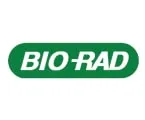


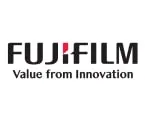

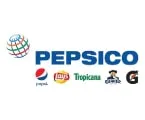
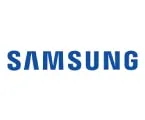





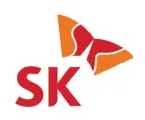
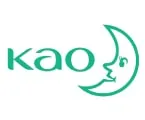

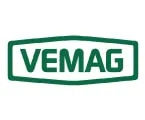
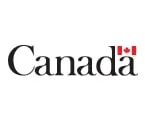




Published Date: Jul-2024
Published Date: May-2023
Published Date: Jan-2025
Please enter your corporate email id here to view sample report.
Subscribe to get the latest industry updates